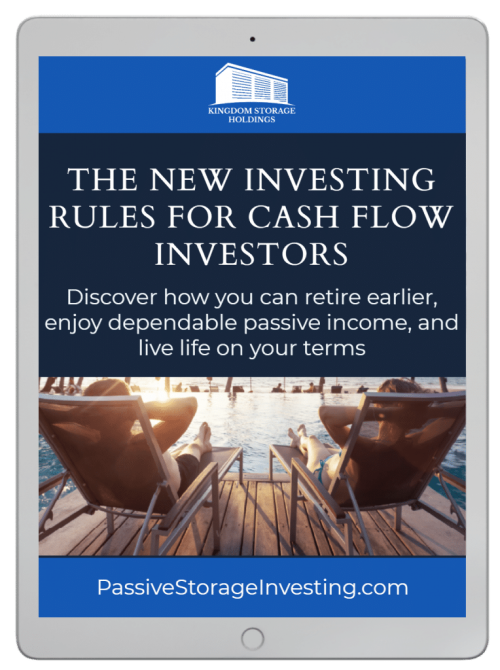What Is Passive Investing?
You may have been hearing a lot about passive investing recently. Passive investments seem to make a surge every few years, and that’s for good reason. Passive investing is the perfect introduction to investing for first-time investors or a portfolio booster for seasoned investing pros. Check out this guide to get started on passive investing, and create a low-risk, long-term, passive income to beat the market.
In this article, we will explain what passive investing is, and will take you through the different types of investments that are likely to yield high market returns despite requiring minimal initial investment.
Passive Investing Explained
So, what exactly is passive investing? This is an investing strategy that maximizes the return on investment (ROI) by minimizing the buying and selling of those investments. Passive strategies follow a buy-and-hold portfolio strategy which aims at creating return over a long period of time.
One of the most common types of passive investing is using index funds, in which an investor will try to mimic a larger index, such as the S&P 500 index, to create minimal fees and passive funds compared to an actively managed portfolio. This type of portfolio usually consists of investing in stocks, bonds, and company shares. Let’s dive deeper into the world of passive investing to see if it’s right for you.
Active Vs. Passive Investing
You might be wondering what the difference is between these two investment strategies. Active investors actively manage their portfolios to take advantage of profitable conditions in the market. They frequently track the performance of stocks in order to buy low and sell high. Active management is much more involved than passive portfolio management.
Active managers are mainly interested in short-term profits, so they monitor market trends daily. An active investment approach may have some potential benefits. One benefit is greater risk management potential. An active investor may see a potential dip in the stock market and offload the investment. This may also allow for short-term profits. Active managers can also work towards more specific goals for their clients, such as growing a retirement account or IRA.
While active investing has its benefits, it also has some drawbacks. Actively managed portfolios pose a much greater risk since investments are being traded quickly. The potential costs associated with active investment strategies are greater than with passive investment strategies.
Benefits of Passive Investing

The main reason investors are interested in passive investments is because they offer passive income over a longer period of time. Passive income allows you to live a cash-flow lifestyle without worrying too much about your investment portfolio. Passive investors are generally more concerned with growing their wealth over time without much risk. However, this type of index still requires the investor or investment managers to have a certain risk tolerance in order to see the benefits and beat the market.
One of the great advantages of passive investing is the extremely low fees associated with each portfolio. Since no one is advising you on risky stocks or managing your portfolio full-time, you don’t have to pay some of the exorbitant fees and commissions of fund managers. Passive funds simply follow the market index.
Another benefit of passive investing is that you can easily see which assets are following the index investing benchmark. You have control over a broad, passively managed portfolio of investments because you know where your money has been invested long-term.
If you’re making your money work for you, then you likely won’t have to worry about a huge capital gains tax at the end of the year. Using a passive investing approach will help you save significantly on your taxes. In fact, many passive investment strategies, such as real estate, will actually give you a massive tax break. This creates tax efficiency in your portfolio.
Passive index investing is far simpler and less dynamic than active strategies. You can buy and hold investments without having to constantly research market trends and abrupt changes. It is, therefore, less of a full-time commitment than active investing but can yield similar returns over the long term.
Potential Downside of a Passive Investment Strategy
While passive investing is a fantastic way to bolster your wealth, it is always a good idea to understand a potential drawback to see if it is right for you.
Passive investment portfolios do not allow you to hunt for the next big investment opportunity. That means that you may not see significant short-term returns. While this is not a deal-breaker for most, some people might want to find the next big thing to add to their holdings account.
What Are the Best Passive Investment Strategies?
Real Estate
Despite some market fluctuations, real estate continues to be one of the best passive, long-term investments you can make. Rental properties are even better for creating passive and steady income for individual investors. Buying a home with a 20% down payment and renting it out to consistent and long-term tenants can create cash flow with very little hands-on work for the investor.
Both long- and short-term rental properties are a great way for investors to make passive income without having to manage the property. If you buy a rental property, you will receive tax breaks and incentives every year that you continue to own the house or building. Investors can also look into commercial investment opportunities such as office buildings or self-storage facilities.
Did you know the self-storage investment industry has been the fastest-growing commercial property investment in the last 30 years? Self-storage units provide passive income to investors without them having to worry about high tenant turnover, cleaning, or maintenance. Self-storage facilities also often do not require staff to run well. Most units have CCTV camera systems and a lock system for tenants to come and go as they please. For the most part, you would not need to hire a property management company to take care of the facility.
If you don’t want to be responsible for ownership of a rental property, you can look into real estate investment trusts (REITs). This type of investing allows people to buy into a crowdfunded property where the dividends are paid out to the pool of investors annually. You will also qualify for tax breaks even though you don’t solely own the property.
Peer-to-Peer Lending
This type of investing is similar to crowdfunding and has only become popular in the last decade or so. It allows investors to give a loan directly to a person or business. There are a number of online platforms that enable borrowers and lenders to invest directly in a person’s business or project. Some of these websites include Lending Club and Upstart.
Peer-to-peer lending (P2P) is a great way for investors to give back to a business idea they want to foster. Most of the returns on P2P loans range from 5 to 12% and have very low barriers to entry for investors. You can start with as little as $20, and once you set up the initial loan you won’t have to do anything else. The lender will be required to pay back the loan with interest over a specific period of time. You can also invest as an accredited or non-accredited lender.
Not only does P2P lending allow you to give back to the community and invest in the future of small businesses, but you will also make relatively high returns as a passive income. Investing in that way can be very lucrative and it can be a great of getting involved in a passion project.
Dividend Stocks
This investing strategy can yield big returns depending on the company. Dividend stocks are paid out to shareholders in a company. A business will generate profits each year and pay its investors and shareholders a percentage of that profit. An investor can either reinvest the money into additional shares or cash out.
Dividend stocks can have high returns and help investors make passive income without being responsible for the day-to-day operations of a business. Be aware though, the market can be unpredictable, so, dividend payouts can fluctuate from year to year. This means you must be prepared for your investments in dividend stocks to occasionally not produce as much of a return as you might have thought. However, most large companies will post a profit and payout dividends yearly, which managing your passive investing a bit easier.
Index Funds
Index funds, which we touched on before, are mutual funds that are invested based on a market index. The mutual funds in your portfolio are invested in a way that will copy a market index. This means that they are low-risk and easy to manage. This investment strategy ideal for people who are trying to build a retirement account or other long-term investment account. In short, it is an investment strategy that if put into place correctly is more than likely to bring in high returns over the long term.
How Do I Start Passive Investing?

Are you ready to make the leap into passive investing and start earning a cash flow income? We recommend starting in one of the categories above to ensure that you invest in low-risk assets. The very first thing you should do before investing is to analyze your financial situation to see where you stand.
After you have done that, you can start weighing up the benefits of each investment strategy and evaluate potential returns you might reap. Remember that any type of investment does involve some risk tolerance and sometimes transaction costs.
Analyze Your Financial Situation
The first step is to analyze your net worth and see which direction it’s heading. Your income will not factor into this equation. You should simply take a look at what you have in assets versus what you owe.
You should also calculate your income to debt ratio, which might sound scary. You should take a look at your current bills, such as your mortgage, car payment, and student loans, and compare them to your income. After that you have done that, you can then decide which investment strategy is most suitable to you and is the most likely to yield the highest returns.
Next, you should consider what investment strategies might work for you and your financial situation. There are many different options, including passive investments, that have low barriers to entry. We recommend taking a look at one of our top 4 passive investment strategies above to bolster your wealth and start earning passive income today.
Financial Takeaways
Passive investing can be a great way to earn income by investing funds while you continue to live your everyday life. A cash flow income is one of the easiest investments to make your money work for you. Passive investing is a long-term, low-risk option for people who don’t want to constantly worry about what their portfolio is doing from day to day.
This is not to say that investing in this way doesn’t require you or your portfolio manager to keep an eye on the market. You still need to keep an eye out for potentially profitable investment opportunities; particularly their operating costs are low and they can help you reach your investment goals. As always, just as is the case with active investments, there might fees attached to some of the investments you make. That is why you need to keep an eye on the data and have a good idea of your expense ratio at all times.
Passive investing can be a better option than active investing because it will save money management fees and increase your tax efficiency. One of the biggest expenses for business investors every year can be their taxes. The passive investment strategies we recommended offer tax breaks to investors, and you won’t have to worry about a yearly capital gains tax.
Now, you’re almost ready to invest the right way to generate consistent passive income. Submit your Application to be an Investor with us, and get started today.





